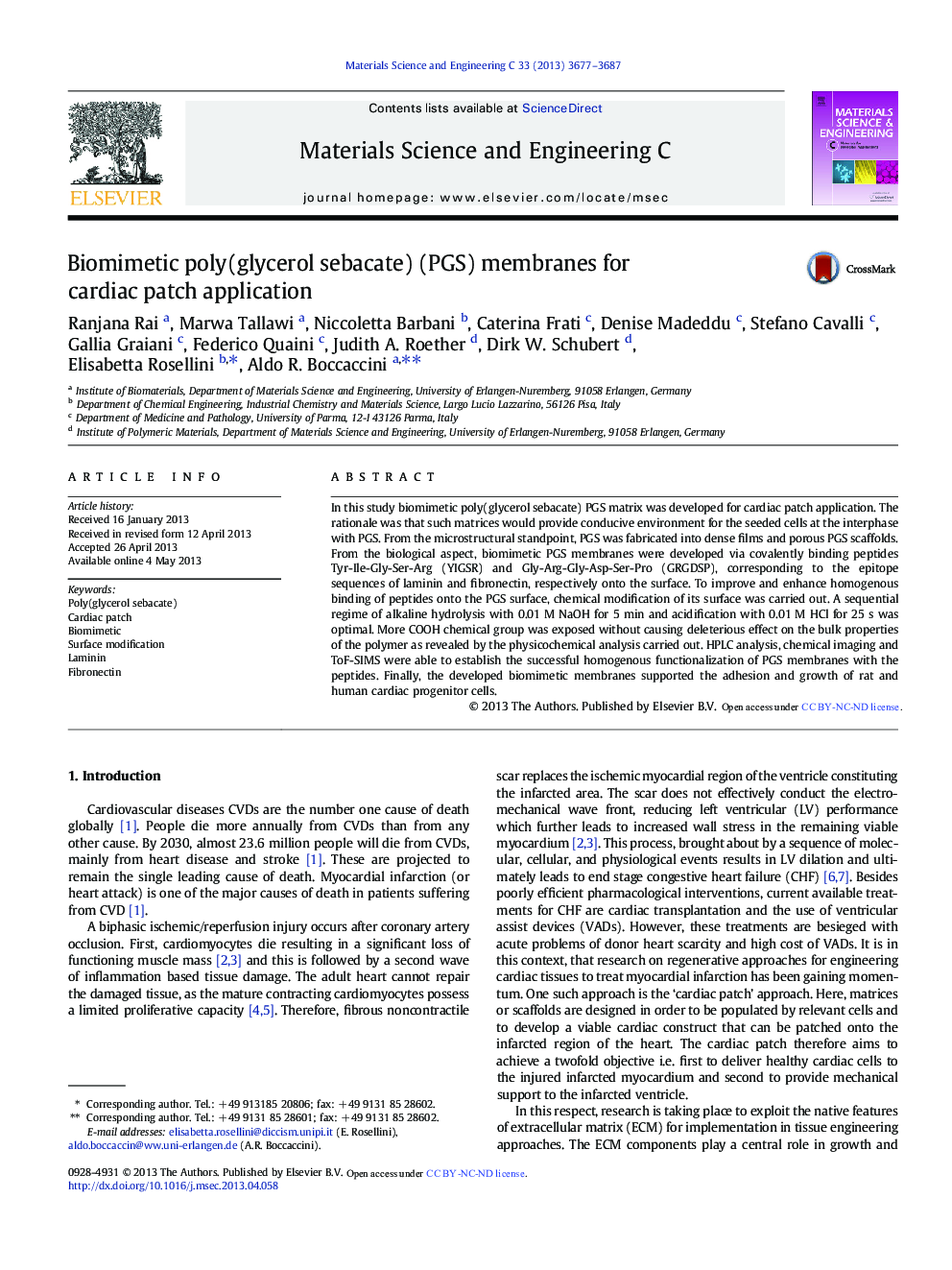| Article ID | Journal | Published Year | Pages | File Type |
|---|---|---|---|---|
| 10614537 | Materials Science and Engineering: C | 2013 | 11 Pages |
Abstract
In this study biomimetic poly(glycerol sebacate) PGS matrix was developed for cardiac patch application. The rationale was that such matrices would provide conducive environment for the seeded cells at the interphase with PGS. From the microstructural standpoint, PGS was fabricated into dense films and porous PGS scaffolds. From the biological aspect, biomimetic PGS membranes were developed via covalently binding peptides Tyr-Ile-Gly-Ser-Arg (YIGSR) and Gly-Arg-Gly-Asp-Ser-Pro (GRGDSP), corresponding to the epitope sequences of laminin and fibronectin, respectively onto the surface. To improve and enhance homogenous binding of peptides onto the PGS surface, chemical modification of its surface was carried out. A sequential regime of alkaline hydrolysis with 0.01Â M NaOH for 5Â min and acidification with 0.01Â M HCl for 25Â s was optimal. More COOH chemical group was exposed without causing deleterious effect on the bulk properties of the polymer as revealed by the physicochemical analysis carried out. HPLC analysis, chemical imaging and ToF-SIMS were able to establish the successful homogenous functionalization of PGS membranes with the peptides. Finally, the developed biomimetic membranes supported the adhesion and growth of rat and human cardiac progenitor cells.
Related Topics
Physical Sciences and Engineering
Materials Science
Biomaterials
Authors
Ranjana Rai, Marwa Tallawi, Niccoletta Barbani, Caterina Frati, Denise Madeddu, Stefano Cavalli, Gallia Graiani, Federico Quaini, Judith A. Roether, Dirk W. Schubert, Elisabetta Rosellini, Aldo R. Boccaccini,
